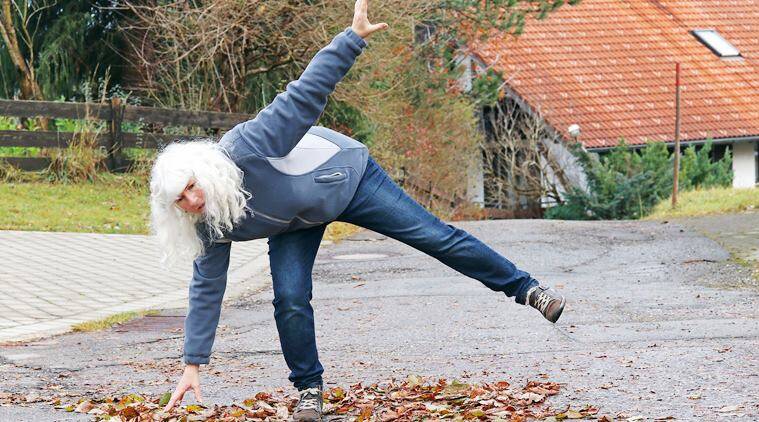Falling is a threat millions of aging Americans face, especially those 65 and up. At least one in four elderly people will suffer a fall each year. The CDC analyzed data from a 2014 Behavioral Risk Factor Surveillance System (BRFSS) survey and found that suffering one fall doubles an elderly person’s chance of having a repeat fall. The survey also showed that only half of the falls that occur each year are discussed with a health care provider.
Falls Are Costly And Can Result In Serious Injury
From head injuries to broken bones, it’s estimated that one in five falls result in serious injury. Some statistics:
The Agency for Healthcare Research and Quality found that over 300,000 elderly people are hospitalized each year for hip fractures.
According to the Web-based Injury Statistics Query and Reporting System (WISQARS) by the Centers for Disease Control and Prevention, National Center for Injury Prevention and Control, fall injuries account for over 800,000 hospitalizations and 2.8 million emergency room visits each year.
A fall study published in SafetyLit found that 90% of hip fractures are the result of a fall.
Another study published in Academic Emergency Medicine found that the leading cause of traumatic brain injuries seen in U.S. emergency rooms is due to falls. The second leading cause was motor vehicle accidents.
As to the cost of falls, a study published by the Journal of Safety Research found that there were over 24,000 fatal and 3.2 million non-fatal, treated falls in 2012 for 616.5 million the fatal falls and over 30 billion non-fatal, treated falls.
What Can Happen After a Fall?
While not all falls cause injury, those that do often result in serious injuries, like head trauma or broken bones, which often compromises the person’s ability to perform activities of daily living or even live independently.
It’s often this very fear of loss of independence that causes elderly persons not to report falls. However, medical help must be sought immediately after a fall that produces an injury, especially if the person takes certain medications, like blood thinners, which can complicate the injury.
OALib Journal study found many people become afraid of falling again following a fall, even if the first fall didn’t result in injury, and that this fear often results in the person becoming less active. Ironically, inactivity weakens bones and can thereby increase an elderly person’s fall risk.
What Conditions Make You More Likely to Fall?
Risk factors are conditions that contribute to a person’s likelihood to fall. Some common risk factors include:
• Vitamin D deficiency.
• Gait difficulty – balance and how a person walks.
• Lower extremity and hip weakness.
• Impaired vision.
• Any medication that impairs gait, such as sedatives or antidepressants.
• Any medication, prescription or over-the-counter, with side effects that impair motor function.
• Foot issues, such as pain or neuropathy.
• Ill-fitting footwear.
• Environmental hazards, such as steps that need repair, rugs that aren’t secured, clutter, and other trip hazards.
The more risk factors a person has, the more likely they are to suffer a fall.
How Can You Prevent Falls?
The good news is that many falls are preventable. Risk factors can be modified to reduce the risk of a fall. Here’s how:
Make A Safer Environment
• Look for trip hazards and either remove or secure them.
• Add grab bars and a shower seat to your bathroom.
• If you live in a multi-story home, consider converting to a downstairs bedroom and putting railings on both sides of all stairs.
• Increase lighting around and within the home.
• Make water-prone areas within and around the home slip-resistant.
Retirement often means a fixed income. If possible, it is best to start planning for some of the more costly modifications, such as outdoor lighting, before retirement.
Talk With Your Healthcare Team
• Your primary care physician can evaluate your risk of a fall and provide you with materials and resources to lessen your risk.
• Speak to any specialists you might see, such as a rheumatologist, to determine how the disease impacts your fall risk. Certain progressive diseases allow for some planning ahead.
• Ask your pharmacist to review all prescription and over-the-counter medications you take concerning fall risk.
Make An Appointment With A Vision Specialist
The eyes can change rapidly, especially for those retirement ages, make sure that you see a vision specialist once a year and as soon as you sense any change in your vision. They may recommend two sets of glasses if you need bifocal or progressive lenses; you may want a distance-only pair of glasses for outdoor activities since bifocal and progressive lenses can often make judging distance outdoors difficult.
Start A Strength Training And Balance Exercise Regiment
Tai chi is a great example of the type of exercise that will strengthen the lower extremities and improve balance. Again, speak with your healthcare provider to see what may work for you and you’re specific medical history.

